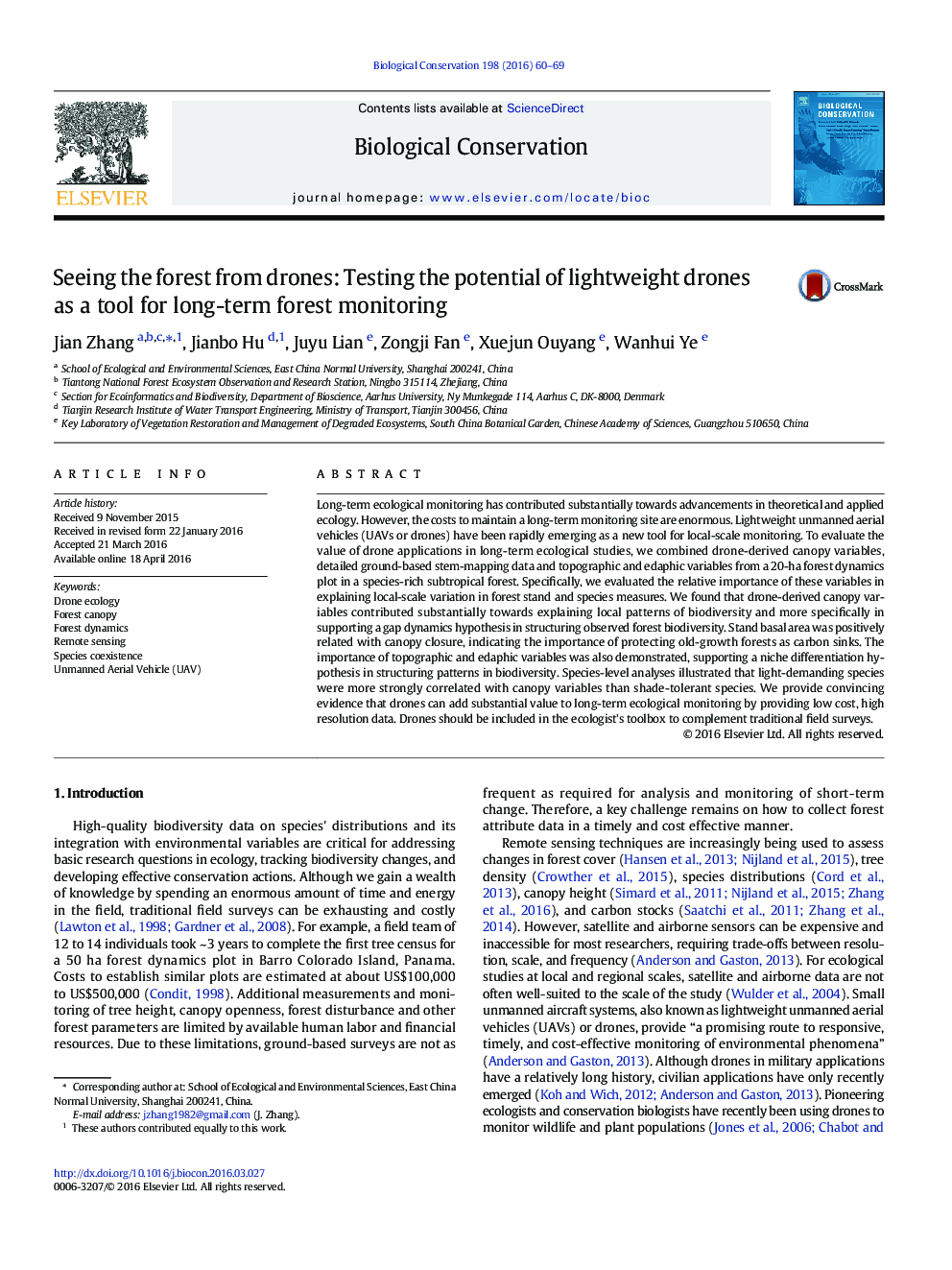| کد مقاله | کد نشریه | سال انتشار | مقاله انگلیسی | نسخه تمام متن |
|---|---|---|---|---|
| 4385016 | 1617903 | 2016 | 10 صفحه PDF | دانلود رایگان |
• We used a lightweight drone to map in detail forest canopy structure across a 20-ha subtropical forest dynamics plot.
• We examined the added benefit of incorporating drone-derived variables in explaining local variation in both stand and species measures.
• Drone-derived canopy variables contributed substantially towards explaining spatial patterns in biodiversity.
• Species with different light requirements responded to canopy variables supporting gap dynamics successional theories.
• Lightweight drone technologies offer great potential for long-term ecological studies.
Long-term ecological monitoring has contributed substantially towards advancements in theoretical and applied ecology. However, the costs to maintain a long-term monitoring site are enormous. Lightweight unmanned aerial vehicles (UAVs or drones) have been rapidly emerging as a new tool for local-scale monitoring. To evaluate the value of drone applications in long-term ecological studies, we combined drone-derived canopy variables, detailed ground-based stem-mapping data and topographic and edaphic variables from a 20-ha forest dynamics plot in a species-rich subtropical forest. Specifically, we evaluated the relative importance of these variables in explaining local-scale variation in forest stand and species measures. We found that drone-derived canopy variables contributed substantially towards explaining local patterns of biodiversity and more specifically in supporting a gap dynamics hypothesis in structuring observed forest biodiversity. Stand basal area was positively related with canopy closure, indicating the importance of protecting old-growth forests as carbon sinks. The importance of topographic and edaphic variables was also demonstrated, supporting a niche differentiation hypothesis in structuring patterns in biodiversity. Species-level analyses illustrated that light-demanding species were more strongly correlated with canopy variables than shade-tolerant species. We provide convincing evidence that drones can add substantial value to long-term ecological monitoring by providing low cost, high resolution data. Drones should be included in the ecologist's toolbox to complement traditional field surveys.
Journal: Biological Conservation - Volume 198, June 2016, Pages 60–69
